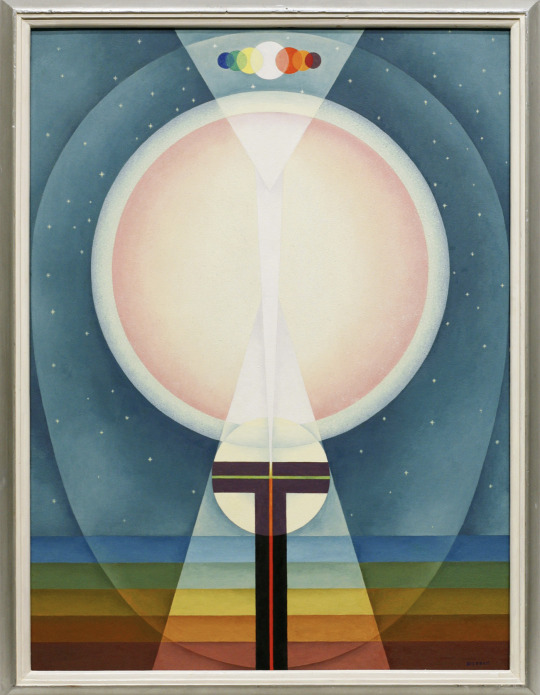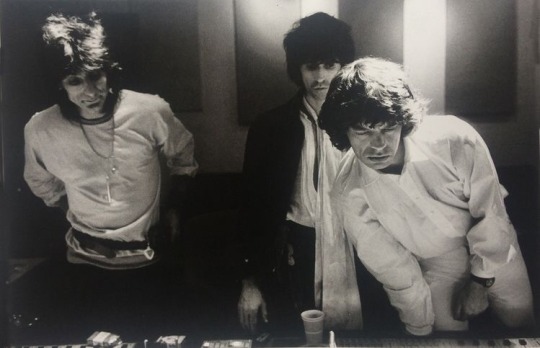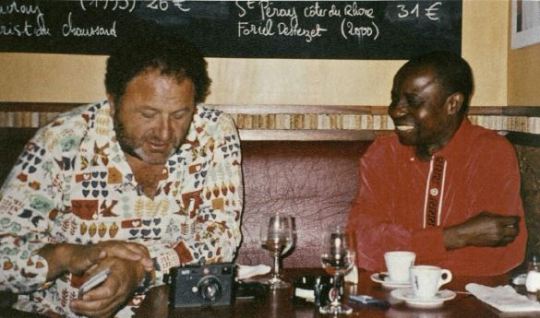#jean pigozzi
Explore tagged Tumblr posts
Text

Mick Jagger and Arnold Schwarzenegger by Jean Pigozzi at the Hôtel du Cap, Antibes, 1990.
#mick jagger#arnold schwarzenegger#the rolling stones#classic rock#old rockstar#90s rock#90s music#90s#90s aesthetic#nineties#actor#rocknroll#rock#rock n roll#jean pigozzi#antibes#france#1990#1990s
18 notes
·
View notes
Text



Some clippings I found of Mick , Keith , and Charlie
Photos by Jean Pigozzi , Annie Flanders, and Gered Mankowitz
#the rolling stones#mick jagger#keith richards#charlie watts#bluesrock#rockband#70srock#70s#60s#60srock#80s rock#80s
42 notes
·
View notes
Text



Seyni Awa Camara
Untitled, 2010
Seyni Awa Camara was born in 1945 in Casamance in southern Senegal, which she has never left. The origin of her art is often associated with a legend. During her childhood, she and her two brothers disappeared in the forest for several days during which they received a mysterious divine initiation. According to her, the geniuses of God who kept them out of sight would have taught them to work the earth. Since then, she models stories, monsters, dreams...
These large figures, often human, sometimes animal, on which a profusion of children or mystical beings intertwine, tell part of her story. That of a painful past where her motherhood was compromised in a society that gives it a primordial importance. Her work takes the viewer into a dreamlike world of intimacy and questioning.
Camara's work was first revealed in Europe during the exhibition Magiciens de la Terre in 1989, organized at the Centre Pompidou and the Halle de la Villette in Paris.
Her work has since been shown in major exhibitions (49th Venice Biennale, 2001; African Art Now, MFAH, Houston, 2005; 100% Africa, Guggenheim Bilbao, 2006; Art/Afrique: Le Nouvel Atelier, Fondation Louis Vuitton, Paris, 2017; Amongst the Living with Seyni Awa Camara, Michael Armitage, White Cube, 2022) and has been included in prestigious collections (Fondation Louis Vuitton, Fondation Cartier pour l'Art Contemporain, Voorlinden Museum, CAAC: The Jean Pigozzi African Art Collection).
4 notes
·
View notes
Text
Bass Pro Blood New shirt
Buy it: https://usateeshub.com/product/bass-pro-blood-new-shirt/
Diane von Furstenbergs niece Talita is building her own fashion empire, one collection at a time! The 21-year-olds latest capsule collection from DVF, called Sweet Escape, has everything you need to enjoy the Bass Pro Blood New shirt it is in the first place but last days of summer and enjoy a socially distanced Labor Day celebration. Inspired by the desserts (each piece is named after Talitas favorite dessert), the launch includes baby doll mini dresses, tea length dresses, flowy jumpsuits and cozy playsuits in sorbet-inspired pastels and Alluring print. Talita (who appears in the campaign shot by legendary Saint-Tropez photographer Jean Pigozzi) said in a press release: “This collection brings the flavor of summer into your wardrobe and hopes that Hope will bring it into our lives. For a little much-needed romance and escape. ”.

Home: https://usateeshub.com/
0 notes
Text

Chéri Samba | dans la collection Jean Pigozzi https://www.artlimited.net/agenda/cheri-samba-dans-la-collection-jean-pigozzi-exposition-musee-maillol-paris/fr/7585761
0 notes
Text
CHERI SAMBA
Au Musée Maillol

Chéri Samba – né en 1956 au Congo – est sans conteste le peintre africain le plus célèbre de sa génération. Ambassadeur de la « peinture populaire » de Kinshasa, il a largement contribué à faire connaître ce mouvement informel avec ses peintures figuratives aux couleurs franches qui interpellent, dénoncent, caricaturent et provoquent, le plus souvent avec humour, dans un style qui est tout sauf naïf.
Cette exposition au Musée Maillol est la première rétrospective de l’œuvre du peintre, couvrant 40 ans de création. Elle présente avec plus de 50 tableaux un parcours à travers plusieurs thématiques « sambaïennes » : l’autoportrait comme élément central de sa peinture, le Congo et l’Afrique, géopolitique et environnement, l’histoire de l’art et enfin la femme, thème qui ouvre un dialogue inédit avec l’œuvre de Maillol.
L’ensemble des œuvres réunies pour l’occasion proviennent de la collection Jean Pigozzi, la plus importante collection d’art contemporain africain au monde, qui contribue depuis plus de trente ans à la reconnaissance des artistes d’Afrique sub-saharienne sur la scène internationale.
Pour réserver votre ticket, ça se passe ici :
https://museemaillol.com/tickets/
0 notes
Text

Steve's friend Jean Pigozzi, who calls himself a "serious amateur photographer," took the image and told me the story behind it. Although Jean did not work in tech, Steve invited him along to a software conference in New Orleans. One evening after the event, as they were walking down O'Keefe Avenue looking for dinner, Steve—a notoriously fast walker—pulled to a halt. Someone in a store window was working on a Macintosh. He had to take a closer look. How was this person using the Mac? Steve is so curious, so lasered in on trying to understand, that he is bent nearly double. As I zoom in on the image nearly 40 years later, I'm struck by its 1980s details: the woman's perm and overstated shoulder pads; the wired telephone on the wall; the way calculators get top billing in the store name ("Calculator and Computer Center"). And look, tucked in the corner at the far right of the frame—that's a pile of computer boxes and an advertising poster from Apple's chief rival at the time, IBM. This is Steve at a pivotal moment. He's about to turn 29. Apple, which he co-founded and chairs, has recently become one of the youngest companies ever to reach the Fortune 500. The Macintosh has been met with rave reviews. He is on top of the world. And he has no idea that it's all about to change. No idea that while the Mac will revolutionize computing, it will also struggle for sales; no clue that he is months away from being fired by Apple, or that he will spend the next 11 years helping launch Pixar and NeXT; no hint that he will eventually return to Apple and find it on the brink of bankruptcy, then work for the rest of his life to turn it into the most valuable company in the world. We see this in Steve's future, but all he knew in this fleeting moment on a New Orleans street was that somebody was actually using this product—one that he had poured his heart and soul into. And that was enough to stop him in his tracks. Until next time,
Leslie
0 notes
Text
The Transcendental Painting Group
Frieze Los Angeles 2023 is here, and one of the highlights is the exhibition ‘Another World: The Transcendental Painting Group, 1938-1945’ at the Los Angeles County Museum of Art.
The Transcendental Painting Group achieved their modernity through potently charged shapes, patterns, and archetypes that they believed dwelled in the “collective unconscious.” The artists looked to a wide variety of literary, religious, and philosophical forces, including Zen Buddhism, Theosophy, Agni Yoga, Carl Jung, and Friedrich Nietzsche.
Convinced that an art capable of being intuitively understood would have equal validity to representational painting in an era of uncertainty, political divide, and fear, they attempted to promote abstraction that pursued enlightenment and spiritual illumination. According to their manifesto they strove “to carry painting beyond the appearance of the physical world, through new concepts of space, color, light and design, to imaginative realms that are idealistic and spiritual.”
The group, which came to include Agnes Pelton, Lawren Harris, Florence Miller Pierce, Horace Pierce, William Lumpkins and Dane Rudhyar, among others, followed the guidance of Raymond Jonson and Emil Bisttram, who were in turn heavily influenced by the colour theories of Wassily Kandinsky.
📷
1. Stuart Walker, Composition 55 (Convergence), 1938, Jean Pigozzi Collection
2. Agnes Pelton, Winter, 1933, Crocker Art Museum
3. Emil Bisttram, Oversoul, 1941, Private Collection



#Transcendental#Painting#LACMA#LosAngeles#LA#Frieze#FriezeWeek#FriezeLA#ArtWords#Beautiful#Art#AmericanArt#NaturesPalette#Pigments#NaturalPigments#Colour#Space#Light#Shape#Soul#Spiritual#ColourPalette#ColourStudies#ColourTheory#TheColourProject#London
1 note
·
View note
Text



The Glimmer Twins by Jean Pigozzi, Paris, 1978.
85 notes
·
View notes
Photo

by Jean Pigozzi
186 notes
·
View notes
Text

Jean Pigozzi with Jerry Hall and Mick Jagger, 1978.
#jean pigozzi#jerry hall#mick jagger#the rolling stones#classic rock#old rockstar#rockstar gf#rockstar girlfriend#seventies#70s men#70s rock#70s music#70s#1970s#rock n roll#rock#rocknroll#old photography#vintage photography#photography
9 notes
·
View notes
Text

Ronnie Wood, Keith Richards, and Mick Jagger in Paris, 1978.
Photo by Jean Pigozzi
20 notes
·
View notes
Text
An Introduction to Jean Pigozzi

“When I started, everyone thought that I was an idiot. But now many museums - like Pompidou, Tate, Metropolitan in New York, Los Angeles County Museum - they all want to do shows from my collection,” explains French-born Italian collector Jean Pigozzi in 2016, reacting to the rise in popularity and interest in Contemporary African art. At sixty-four years old, Pigozzi has amassed over 10,000 works of Contemporary African art with a particular focus on artists who live and work in sub-Saharan Africa. Pigozzi’s collection is different from other collections of Contemporary African art (such as the Zeitz collection) which include works by artists who may not be currently living and working in Africa and which feature artists from all different parts of the continent. What is not different, however, is Pigozzi’s desire to help African artists to share their stories with the world. Although his collection does not have a permanent museum or location where it can be shown altogether, the works are frequently on loan to prestigious museums internationally and featured in exhibitions worldwide.
Pigozzi was an artist before he ever became an art collector; he discovered photography at a young age as a way to capture the world around him and express himself without extensive writing, which he struggled with due to dyslexia. Growing up in what he calls a “typical European bourgeois” household, the young aficionado regularly attended art museums with his mother, and his parents even had a modest collection of Impressionist works. It was not until the 1970s, when he attended Harvard University in the United States, however, that Pigozzi exposed himself to art that was more avant-garde. Pigozzi recalls spending weekends in New York visiting MoMA, the Whitney, and galleries downtown. Pigozzi found the art around him fascinating: “It was all so exciting,” he said. “This was the time of Conceptual Art and Minimalism; Carl Andre and Sol LeWitt.” His first purchase was a small Sol LeWitt drawing. At age twenty one, Pigozzi inherited his father’s fortune and became wealthy enough to enjoy a life of leisure dedicated to following his passions - including his burgeoning interest in art - wherever they led him.
In 1989, Pigozzi discovered Contemporary African art when he attended the well-known, yet controversial, exhibition Magiciens de la terre at the Centre Georges Pompidou in Paris. The exhibition, which is seen as one of the major turning points for the art world’s globalization, featured works by more than 100 artists from 50 countries, half of which were so-called “non-Western.” Upon seeing the show, Pigozzi was struck by the creativity of the African artists whose works were featured. Pigozzi was not able to purchase the works in the show, which included those by now relatively more well-known Contemporary African artists Bodys Isek Kingelez and Chéri Samba, because they were owned by a French television station. However, Pigozzi was introduced to André Magnin, who helped curate the show, and he became Pigozzi’s advisor as he began to collect Contemporary African art. Most of the works that the collector has acquired were purchased directly from the artists themselves, and many of them were discovered by Magnin through his journeys into Africa scouting for artistic talent.
While Pigozzi himself has never been to Africa, he remains committed to meeting and talking with the artists whose work he collects, finding collectors who do not do so to be more vulnerable to the tall tales sometimes told by art world professionals when trying to make a sale. Among the 71 artists listed on Pigozzi’s collection website, only some of them have been featured in gallery or museum shows - lending itself well to the interpretation that Pigozzi enjoys discovering new artists. Pigozzi has been credited for essentially launching the careers of artists in his collection who do have more art world visibility. For instance, journalist Tess Thackara argues: “Without Pigozzi’s patronage, it’s easy to imagine that [Kingelez] would never have made it onto the MoMA’s walls; the high-profile collector has undeniably brought visibility to Kingelez’s work and played a crucial role in its preservation.”
When he talks about his motives for collecting the art that he does, Pigozzi never talks about financial viability, stability or even potential to produce any sort of profit. In fact, Pigozzi believes that anyone viewing his collection through a financial lens would see it as a “mistake,” with his most valuable paintings being worth $100,000 at maximum, according to the collector - a small amount of money compared to the millions of dollars that Warhol’s and Basquiat’s achieve at auction. But, Pigozzi does not view his works through a financial lens, explaining that while his choice of category may not make sense of a collector interested in making a long-term profit off his works, it makes sense for Pigozzi because he feels he occupies an interesting and unique niche within the art world.
Artworks from The Contemporary African Art Collection (CAAC), which is what Pigozzi calls his collection, have been featured in what one might argue to be every important exhibition of Contemporary African Art in major art institutions in 2018, including Romuald Hazoumè at Gagosian, Park & 75, New York; Platform: Barthélémy Toguo: The Beauty of Our Voice at the Parrish Art Museum, Water Mill, New York; and Bodys Isek Kingelez: City of Dreams at the Museum of Modern Art, New York. All of those exhibitions have gotten major press coverage, including mentions or full articles in The New York Times, The Wall Street Journal, TIME, and Forbes.
In terms of his plans for the future, Pigozzi has expressed a desire to contain his collection within one place and make it available to the public without having to be dispersed among various museums. “It would be sad if 30 years of work disappeared, and the 10,000-strong collection was dispersed,” Pigozzi laments. Yet, Pigozzi realizes that he may not have the resources to put all of his art in one place right now - at least not in a place that he himself funds. “If I [were] Bill Gates,” he says, “I would build a museum. But I’m not Bill Gates. So, I’m open to suggestions,” Pigozzi discloses in an interview with an implied sense of humor. In the meantime, viewing sublime works from Pigozzi’s collection, like the imaginative Bodys Isek Kingelez’s utopian city sculptures at MoMA, is not a bad option for those of us interested in unveiling the stories that Pigozzi readily makes available to the art-viewing public.

Jean Pigozzi and Chéri Samba, Paris, 2002. Source: Les Initiés: un choix d’oeuvres (1989-2009) dans la collection d’art contemporain africain de Jean Pigozzi, Fondation Louis Vuitton, 2017.
Photo at top: Jean Pigozzi. Source: https://www.youtube.com/watch?v=-Jy-ggtttZQ.
Bibliography:
Artforum. “Jean Pigozzi to Build Foundation for Contemporary African Art.” April 26, 2017. Accessed November 4, 2018. https://www.artforum.com/news/jean-pigozzi-to-build-foundation-for-contemporary-african-art-68078.
Baumgardner, Julie. “Inside the World’s Largest Collection of Contemporary African Art.” Artsy. October 12, 2015. Accessed November 4, 2018. https://www.artsy.net/article/artsy-editorial-inside-the-world-of-jean-pigozzi-the-tech.
Buffenstein, Alyssa. “Investor and Celeb Photographer Jean Pigozzi Is Searching for a Home for His African Art Collection.” artnet News. April 27, 2017. Accessed November 4, 2018. https://news.artnet.com/art-world/jean-pigozzi-foundation-contemporary-african-art-938897.
Caacart.com. “Artists.” Accessed November 4, 2018. http://caacart.com/caacart-artists.php. Caacart.com. “Exhibitions.” Accessed November 4, 2018. http://caacart.com/caacart-exhibitions.php.
Caacart.com. “Home.” Accessed November 4, 2018. http://caacart.com/.
Christie’s. “The Insider’s guide to Contemporary African art.” February 15, 2018. https://www.christies.com/features/The-insider-guide-to-Contemporary-African-art-8887-1.aspx.
Delson, Susan. “In the Hamptons, This Artist Builds the Boat And Serves the Coffee.” The Wall Street Journal. July 26, 2018. Accessed November 4, 2018. https://www.wsj.com/articles/in-the-hamptons-this-artist-builds-the-boat-and-serves-the-coffee-1532617982.
Edwards, Natasha. “Jean Pigozzi’s Massive Collection of African Art.” Surface. November 30, 2015. Accessed November 4, 2018. https://www.surfacemag.com/articles/20151130jean-pigozzis-massive-collection-of-african-art/.
Friedel, Julia. “Magiciens de la Terre.” Contemporary And. August 12, 2016. Accessed November 4, 2018. https://www.contemporaryand.com/magazines/magiciens-de-la-terre/.
Harris, Gareth. “Venture capitalist Jean Pigozzi plans foundation to house contemporary African art collection.” The Art Newspaper. April 26, 2017. Accessed November 4, 2018. https://www.theartnewspaper.com/news/venture-capitalist-jean-pigozzi-plans-foundation-to-house-huge-contemporary-african-art-collection
Meistere, Una. “Jean Pigozzi.” Independent Collectors. July 19, 2016. Accessed November 4, 2018. https://independent-collectors.com/collectors/jean-pigozzi-arterritory/.
Pigozzi, Jean. “Jean Pigozzi: The Collecting Life.” Caacart.com. June 2005. Accessed November 4, 2018. http://caacart.com/about_jp_en.php.
Press, Clayton. “Romauld Hazoumé, Gagosian, Park & 75, New York.” Forbes. September 23, 2018. Accessed November 4, 2018. https://www.forbes.com/sites/claytonpress/2018/09/23/romuald-hazoume-gagosian-park-75th-new-york/#5227dbdf3b58.
Schwendener, Martha, Will Heinrich, and Jillian Steinhauer. “What to See in New York Art Galleries This Week.” The New York Times. September 13, 2018. Accessed November 4, 2018. https://www.nytimes.com/2018/09/13/arts/design/what-to-see-in-new-york-art-galleries-this-week.html.
Shapiro, Eben. “At MoMA, a Genius Finally Gets His Due.” Time. June 28, 2018. Accessed November 4, 2018. http://time.com/5324720/body-isek-kingelez-moma/.
Smith, Roberta. “Fantastical Cityscapes of Cardboard and Glue at MoMA.” The New York Times. May 31, 2018. Accessed November 4, 2018. https://www.nytimes.com/2018/05/31/arts/design/bodys-isek-kingelez-review-moma.html.
Thackara, Tess. “Bodys Isek Kingelez, Maker of Utopian Cities, Finally Gets the Retrospective He Deserves.” Artsy. May 24, 2018. Accessed November 4, 2018. https://www.artsy.net/article/artsy-editorial-finally-notice-bodys-isek-kingelezs-utopian-vision.
#jean pigozzi#pigozzi#jeanpigozzi#contemporary african art#contemporary art#african art#african contemporary art#blog#art blog#art blogger#contemporary art blog#art collectors#art collector#collectors#art collector profile#art collecting#cheri samba
2 notes
·
View notes
Text

Chéri Samba | dans la collection Jean Pigozzi https://www.artlimited.net/agenda/cheri-samba-dans-la-collection-jean-pigozzi-exposition-musee-maillol-paris/fr/7585761
0 notes
Photo

Sharon Stone fotografiada por Jean Pigozzi, 1992
13 notes
·
View notes
